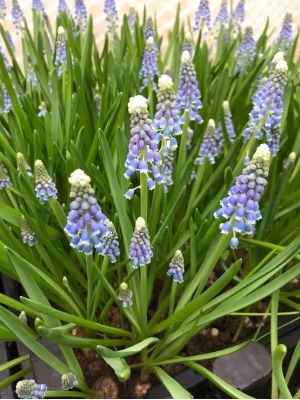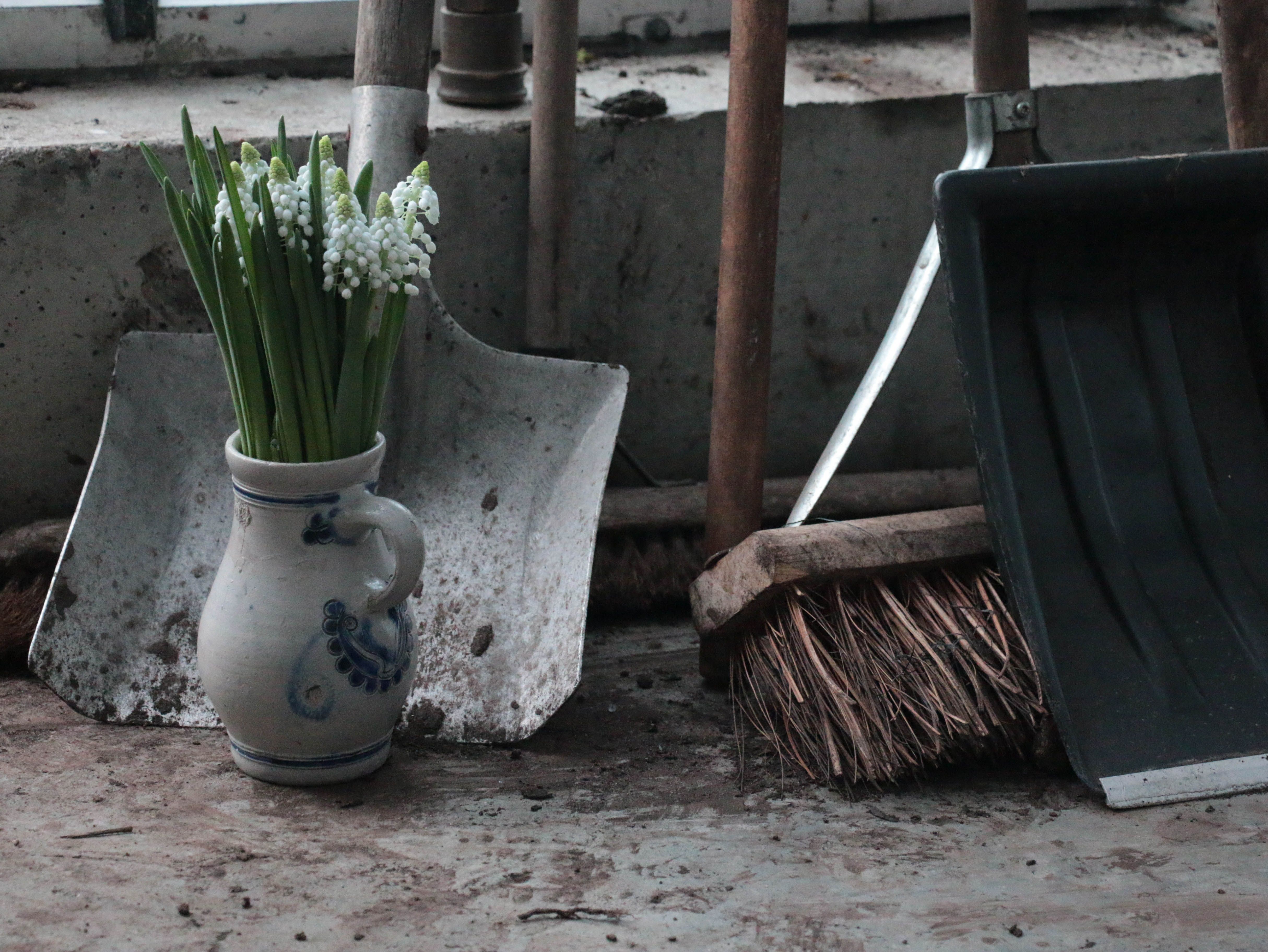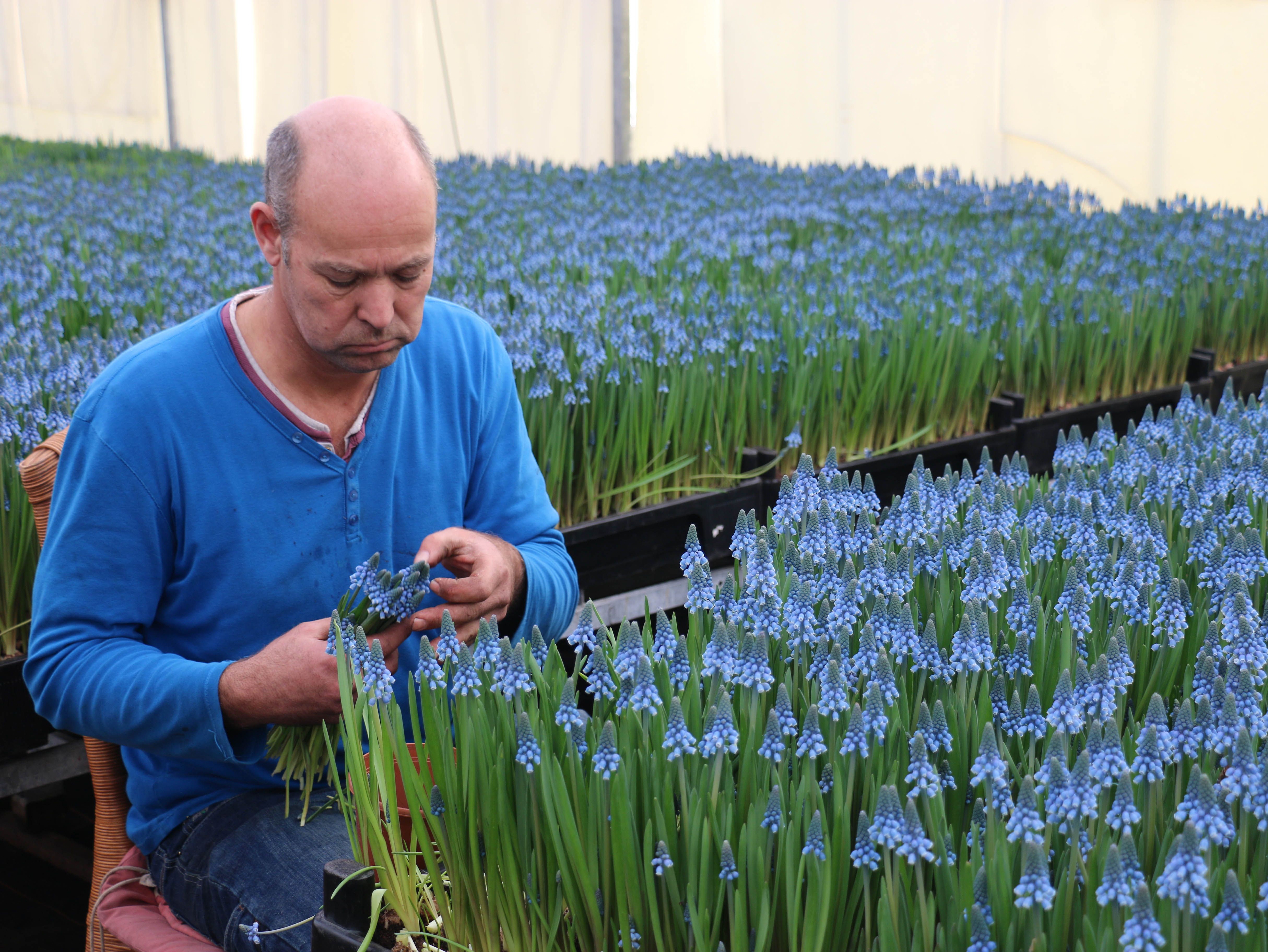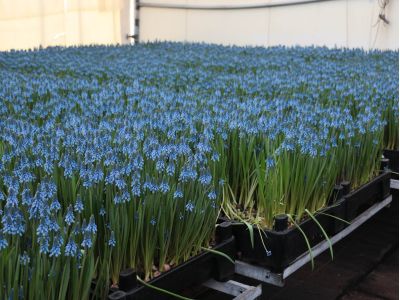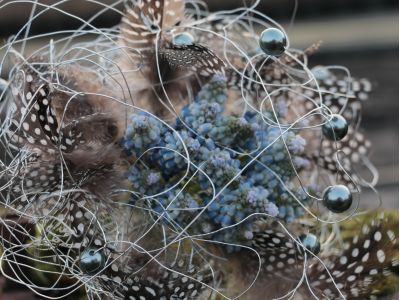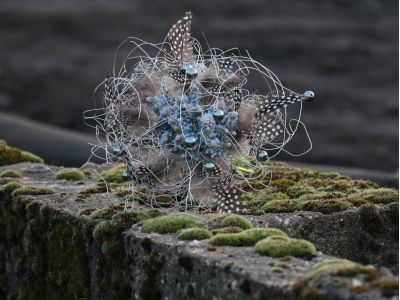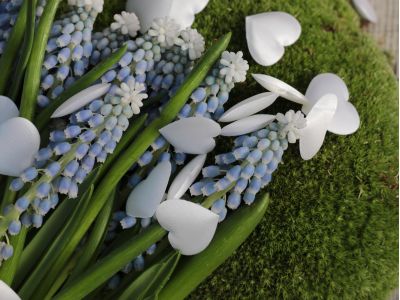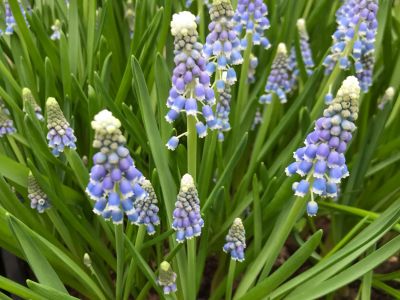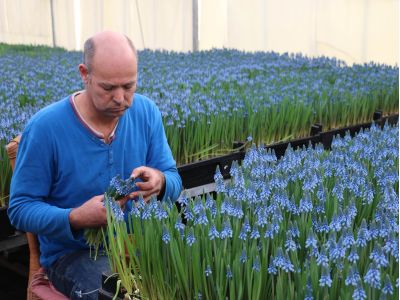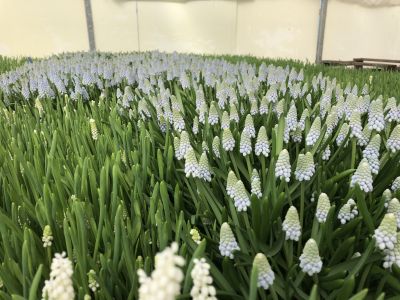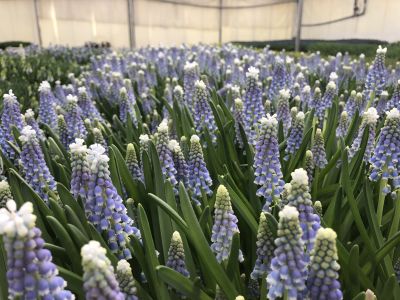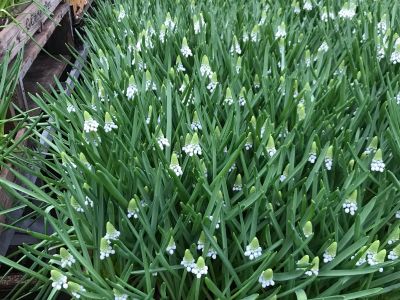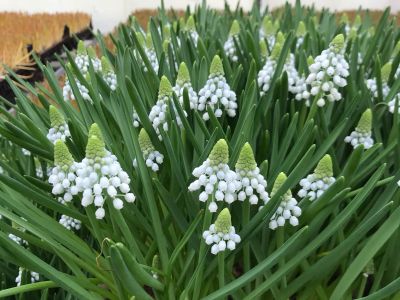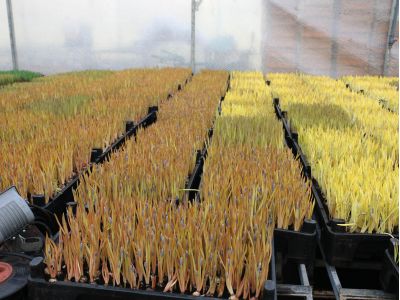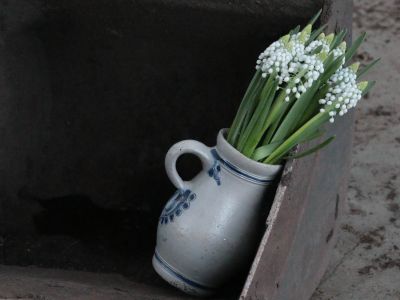Muscari Helena
In the spotlights
Small, fine, sweet and exclusive, but according to the grower, not very well known yet. We know her in blue, but she also shows herself in other colors. We are talking about the cut Muscari., in the Netherlands also called "Blue grape", although the grower does not find that entirely appropriate. After all, the breeding of new varieties has ensured that not all are blue anymore.
Many species
Seeing all these different varieties for ourselves was the main reason for the FloraPodium team to visit Muscari grower Koen van Zeil. In addition to the "normal" blue varieties, he has different colors. One of those varieties is the special double-colored Helena, the product that we would like to put in the spotlight.
The Helena is the improved version of "Touch of snow". This little flower really stands out among the Muscari. For instance, she has a good length and thick stems for a Muscari. Not totally unimportant for Koen, she also grows very well. In terms of care, the Muscari does not need much. It is important that the stems are cut off and that a clean vase is used filled with lukewarm water. Cut flower food is not necessary.
Origin
Muscari is originally from the Mediterranean Sea area. In the warmer areas this sweet little flower can be found between vineyards and orchards. In the colder areas it grows in the grass and forest.
The name Muscari is Greek, derived from Muchos (musk), referring to the smell of the flower. There are about 20 varieties of Muscari that are suitable for trade. In the Netherlands there are about six growers who grow this exclusive flower for cutting. Cut Muscari's are longer than pot Muscari's and also have more leaves. This way you get a respectable bunch of flowers. They must also be kept in the vase.
Koen has been growing Muscari for about 30 years. He started working as an employee for a grower who cultivated Muscari. He himself started officially 20 years ago. He grows Muscari from January until the end of April. In the summer months he has Zinnias in the greenhouse and outside he grows Cypresses.
Collaboration
Koen has a good cooperation with his breeder Paul van Bentem, who during our visit also made time to tell us more about the Muscari. The cut Muscari should become even better known in Paul's perspective and should receive a lot more attention. According to him, for example, the "Manon" variety, a very sweet flower because of its soft blue color is very suitable for weddings, also because it has a long vase life. In addition, the flower can easily be processed in table arrangement for dinner parties. They also look wonderful In small bottles on a salon table, or in Easter arrangements.
According to Paul, the florists should really see this product as an additional sale. As a young boy Paul sold tulips and daffodils from door to door. When he brought Muscari, people bought a small bunch in addition to and not instead of the tulips or daffodils. In his view, you should still sell this product in this way. Muscari does not belong in a full flower display, but separately, for instance in a small presentation at the counter. It must be an extra for the consumer.
The cultivation
What we think is so special about Koen's working method is that everything is still done by hand. There are no machines involved. His cultivation is small and the product is delicate and fragile. Machines would only damage the flowers.
Cultivation of the bulb
The Muscari bulbs are planted between October and mid-December. They are hand-picked and put in boxes. The Muscari naturally blooms in April, because the bulb needs a cold period (just like most bulb varieties) before it starts flowering. In order to be able to regulate the flowering period, the crates are placed in cold storage for 16 weeks. Every day Koen takes out a few boxes and places them in the greenhouse. Because the crop grows in the dark while in cold storage, the young plants first have yellow leaves when taken out. They become greener in the greenhouse every day. The first flowers can be cut after two to three weeks.
Sustainable cultivation
Muscari is by nature a very sustainable and environmentally friendly crop. In addition to the fact that no machines are used, no control is needed, only fresh soil for the crates every year. There are actually no diseases and plagues. However, the crop attracts many bees, which is favorable for this protected animal species.
Propagation
The Muscari is a seedling and propagates in the well-known 'flowers and bees' way. To find new varieties, they just put all varieties close together on a table and let nature takes its course. New varieties are simply created by pollination. They then pick the most promising new varieties and new seed is taken again, leaving only the strongest selection. These bulbs are then propagated by bulb growers from clusters / beads (the new bulbs that grow on the bulb).
Before a Muscari flower can be grown in the greenhouse, the bulbs must be large enough. Small bulbs are first grown outside. The bulbs only make leaves outside allowing them to grow. By planting these bulbs every year, they eventually grow big enough to give a beautiful flower. Most of these bulbs are used for so-called 'dry sales', which is the garden trade. Only 10% is used for cut Muscari cultivation.
Annual cultivation
The Muscari cultivation is annual and gives only one flower per bulb. Once these are cut, compost is made from the remaining bulbs. It is not profitable for the bulb grower to take them back and to multiply them, because they need two years before they can go into production again. This only happens with very exclusive varieties.
FloraPodium, 14 February 2019






